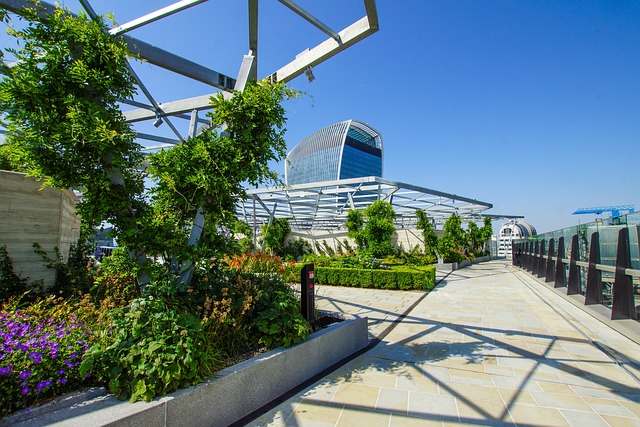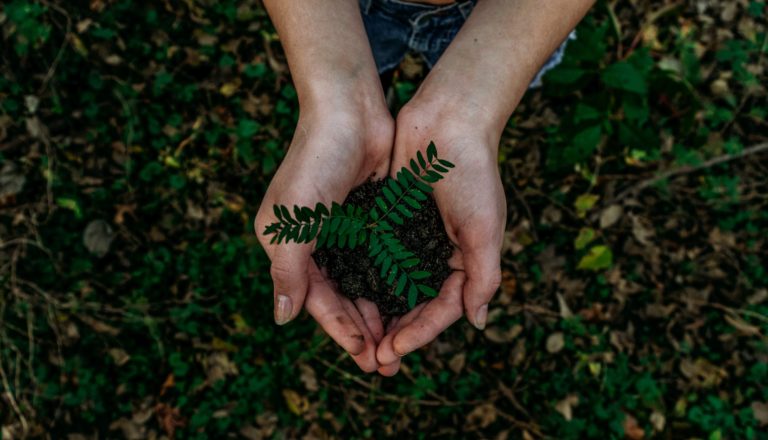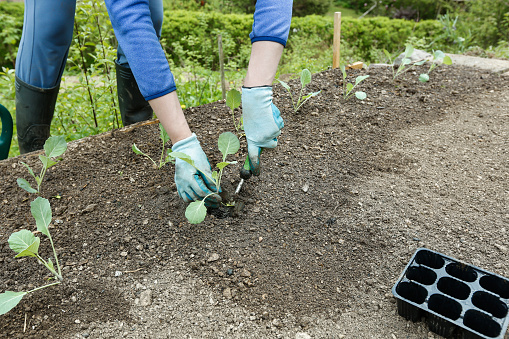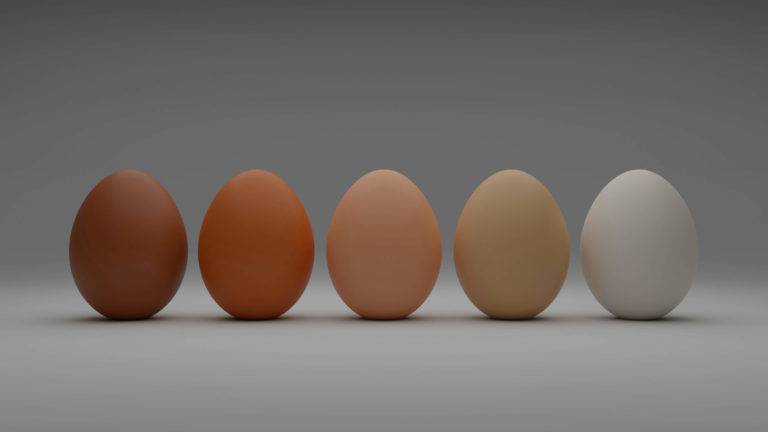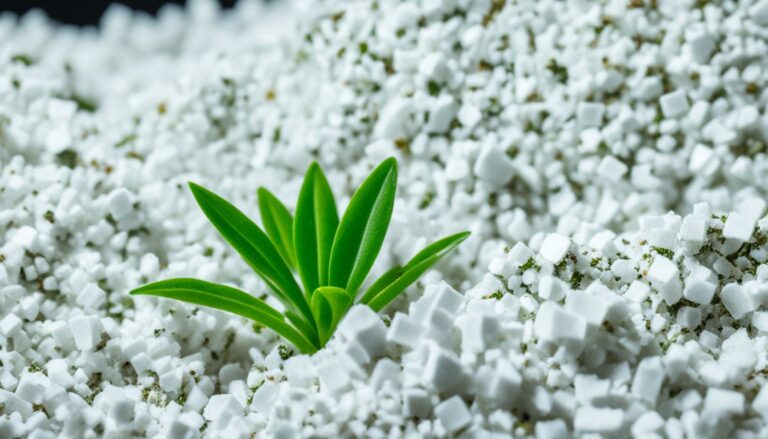The Best Urban Gardening Tips for Newbies
[et_pb_section fb_built=”1″ admin_label=”section” _builder_version=”3.22″][et_pb_row admin_label=”row” _builder_version=”3.25″ background_size=”initial” background_position=”top_left” background_repeat=”repeat”][et_pb_column type=”4_4″ _builder_version=”3.25″ custom_padding=”|||” custom_padding__hover=”|||”][et_pb_text _builder_version=”4.8.1″ _module_preset=”default”]
Did you know that urban gardening is on the rise, with an estimated 35% increase (USA) in city dwellers practicing this relaxing and rewarding hobby?
With more people embracing the idea of bringing nature into their urban environment, it’s no wonder that urban gardening has become a popular trend.
Whether you have limited space on a balcony or rooftop, or even just a windowsill to work with, urban gardening allows anyone the opportunity to grow their own fresh fruits and vegetables.
In this article, I’ll give you some great tips and techniques to help you get started including selecting the right plants, optimizing space, and overcoming common challenges. So, if you’re ready to transform your city space into a lush green oasis, let’s dive into the world of urban gardening!
[/et_pb_text][et_pb_text admin_label=”H2 – Starting an Urban Garden” _builder_version=”4.8.1″ _module_preset=”default”]
Starting an Urban Garden
[/et_pb_text][et_pb_text _builder_version=”4.8.1″ _module_preset=”default”]
If you’re looking to start an urban garden, you’ve come to the right place!
With a little planning and creativity, you can transform even the smallest spaces into thriving green retreats. Whether you have a balcony, a rooftop, or a tiny backyard, there are plenty of options for small space gardening that will allow you to ‘go green’ and even start growing your own food.
The key to successful urban gardening is selecting the right plants that are well-suited for your specific conditions.
1. Look at your available space and watch and track the amount of sunlight it receives. This will help you choose plants that can thrive in your urban environment. Consider plants such as succulents, herbs, and small shrubs for aesthetics, but then think of the food that you eat, that you want to grow yourself.
2. Creating a plan for your garden layout is essential, especially when space is at a premium. Think about utilizing raised beds, containers, or vertical gardening techniques to maximize your small garden’s potential. These methods will not only save you a ton of space but will also make your balcony, rooftop, or other concrete area, a place that you want to spend time in.
3. As always, soil, soil, soil! I cannot stress that enough. Preparing the soil is another crucial step in starting your urban garden. Ensure it is well-draining and nutrient-rich to provide optimal growing conditions for your plants.
4. Invest in basic gardening tools like a trowel, pruners, and watering can, to help you get started.
5. If you’re new to gardening, the best is to start with only a couple of plants. This will allow you to get a feel for gardening and then as you learn and gain confidence, you can gradually expand your urban garden.
Remember, urban gardening is all about creativity and finding innovative ways to make the most of the space you have. By following these tips and techniques, you’ll be well on your way to creating a beautiful and productive urban garden.
[/et_pb_text][et_pb_text admin_label=”H2 – Benefits of Container Gardening” _builder_version=”4.8.1″ _module_preset=”default”]
Benefits of Container Gardening
[/et_pb_text][et_pb_text _builder_version=”4.8.1″ _module_preset=”default”]
When it comes to small space gardening, container gardening is a popular and practical choice. There are so many different types of containers – the material they’re made of, the shape, and the colors – each suited for a place on balconies, windowsills, walls, or even staircases, allowing you to grow your plants pretty much anywhere.
Container gardening offers several benefits:
- Portability: Containers can be moved easily, allowing you to optimize sunlight exposure and rearrange your garden as needed.
- Controlled Growing Conditions: By using containers, you have greater control over the soil quality, moisture levels, and drainage, ensuring optimal growing conditions for your plants.
- Protection: Containers can act as a barrier against pests and diseases, minimizing the risk of damage to your plants.
- Flexibility: With container gardening, you can experiment with a wide variety of plants, from flowers and herbs to vegetables and fruit trees.
So, whether you’re tight on space or simply want to add a touch of green to your urban dwelling, container gardening is an excellent option to explore.
[/et_pb_text][et_pb_text admin_label=”Table – best plants for small space gardening” _builder_version=”4.8.1″ _module_preset=”default”]
These are some easy ones to get you started:
| Best Plants for Small Space Gardening | Sunlight Requirements | Watering Needs | Additional Notes |
|---|---|---|---|
| Succulents | Full sun to partial shade | Low, infrequent watering | Low-maintenance plants that store water in their leaves. Ideal for beginners and small spaces. |
| Herbs (Basil, Rosemary, Mint) | Full sun | Regular watering | Fragrant and flavorful herbs that thrive in containers. Perfect for adding freshness to your culinary creations. |
| Tomatoes (Determinate Varieties) | Full sun | Frequent watering | Compact tomato plants that can be grown in pots. Provide support for the tomato vines as they grow. |
| Lettuce | Partial shade to full sun | Regular watering | Fast-growing leafy greens that can be harvested as needed. Great for smaller containers and cooler climates. |
[/et_pb_text][et_pb_text _builder_version=”4.8.1″ _module_preset=”default”]
Remember to choose plants that suit your specific space and gardening goals and have fun experimenting with different varieties. Soon, you’ll be enjoying the fruits of your labor and the beauty of your urban garden.
[/et_pb_text][et_pb_image src=”https://www.urban-gardener.co.za/wp-content/uploads/2024/03/Rooftop-gardening.jpg” alt=”Many plants in containers on a rooftop” title_text=”Rooftop gardening” admin_label=”Image – rooftop gardening” _builder_version=”4.8.1″ _module_preset=”default”][/et_pb_image][et_pb_text admin_label=”H2 – Best plants for urban gardening” _builder_version=”4.8.1″ _module_preset=”default”]
Best Plants for Urban Gardening
[/et_pb_text][et_pb_text _builder_version=”4.8.1″ _module_preset=”default”]
Selecting the right plants is crucial for a successful urban garden. Whether you’re a beginner or an experienced gardener, choosing the plants that are well-suited for urban gardening environments is key to creating a thriving and beautiful city oasis. Here are some top recommendations and tips to help you make informed decisions and transform your urban space into a vibrant, flourishing garden.
Succulents
Succulents are ideal for urban gardening due to their low maintenance and ability to thrive in small spaces. These hardy plants store water in their leaves, making them drought-resistant and perfect for busy city dwellers. Some popular succulents for urban gardens include Echeveria, Haworthia, and Sedum. Place them on your windowsill or balcony, and they’ll add a touch of greenery to your urban space.
Herbs
Herbs are not only useful in the kitchen but also make excellent choices for urban gardening. They can be grown indoors, on windowsills, or in small containers on balconies. Or go big and include them in spaces in your raised beds. Some easy-to-grow herbs for beginners include basil, mint, rosemary, and thyme. Not only will they provide you with fresh flavors for your meals, but they will also fill your urban garden with delightful fragrances.
Small Shrubs
If you have a bit more space to work with, consider adding small shrubs to your urban garden. Shrubs like Boxwood, Japanese Holly, and Spirea can create a sense of privacy and add visual interest to your outdoor space. They can be pruned to maintain a manageable size and can tolerate the challenging conditions of urban environments. If you have pets, check that the plant you choose are not poisonous to them.
Edibles
What could be more satisfying than growing your own fresh fruits and vegetables in the city? Many edibles can thrive in urban gardening settings. Tomatoes, peppers, blueberries, and strawberries are excellent choices for balconies and rooftop gardens. They require minimal space and can yield a bountiful harvest. Think of trailing vines such as passion fruit, cucumbers and pumpkins – they can all grow UP!
Flowers
Don’t forget to add a splash of color and beauty to your urban garden with flowers. Marigolds, zinnias, and black-eyed susans are just a few examples of flowers that thrive in urban environments. They attract beneficial insects and pollinators and they add pops of vibrancy to your garden. Plant them in containers, hanging baskets, or flower beds to create stunning displays.
Remember, urban gardening is a journey that requires patience, experimentation, and learning. Take time to research the specific needs of each plant and adapt your gardening techniques accordingly. Before you know it, your urban garden will be flourishing and providing you with joy, fresh produce, and a connection to nature even in the heart of the city.
[/et_pb_text][et_pb_video src=”https://www.youtube.com/watch?v=-7MBTsO_SaY” admin_label=”Video” _builder_version=”4.8.1″ _module_preset=”default”][/et_pb_video][et_pb_text _builder_version=”4.8.1″ _module_preset=”default”]
Stay tuned for the final section of our urban gardening series, where we’ll wrap up with some creative and inspiring ideas for urban gardens of all sizes.
[/et_pb_text][et_pb_text admin_label=”H2 – Conclusion” _builder_version=”4.8.1″ _module_preset=”default”]
Conclusion
[/et_pb_text][et_pb_text _builder_version=”4.8.1″ _module_preset=”default”]
Urban gardening is a rewarding and sustainable way to bring nature into city spaces and create a green haven right at your doorstep. With the right techniques and ideas, you can transform even the smallest urban areas into thriving gardens full of fresh produce.
One of the key small space gardening techniques is container gardening. By using pots, hanging baskets, or vertical planters, you can optimize every inch of your available space. This allows you to grow a variety of plants, from aromatic herbs to vibrant flowers, in even the tiniest urban environments.
Another effective technique is vertical gardening. Utilizing walls, fences, or trellises, you can grow climbing plants and vines, saving valuable floor space. Vertical gardening not only adds visual interest to your urban garden but also maximizes your planting capacity.
When choosing plants for your urban garden, opt for varieties that are well-suited for small spaces and urban conditions. Compact vegetables such as cherry tomatoes, peppers, and salad greens thrive in containers. Fragrant herbs like basil, mint, and thyme can be grown in small pots on windowsills or balconies. These urban gardening ideas will ensure a bountiful harvest, even in limited spaces.
So, whether you’re a novice urban gardener or a seasoned enthusiast, don’t let limited space deter you. With these small space gardening techniques and urban gardening ideas, you can embark on an exciting journey of creating an oasis within the city. Start today and witness the beauty and abundance that urban gardening can bring to your life.
[/et_pb_text][et_pb_text admin_label=”FAQ” _builder_version=”4.8.1″ _module_preset=”default”]
FAQ
What are some tips for urban gardening?
Some tips for urban gardening include assessing available space and sunlight, choosing plants suited for urban environments, optimizing space with raised beds and containers, and preparing nutrient-rich soil. It’s also recommended to start with a small number of plants if you’re new to gardening.
How do I start an urban garden in a small space?
To start an urban garden in a small space, consider utilizing techniques like balcony gardening and container gardening. Choose plants that thrive in limited spaces, such as succulents, herbs, and small shrubs. Create a garden layout plan that optimizes space, and ensure the soil is well-draining and nutrient-rich.
What are some recommended plants for urban gardening?
Recommended plants for urban gardening include succulents, herbs, small shrubs, tomatoes, peppers, strawberries, and herbs like basil and mint. Flowers like marigolds, zinnias, and black-eyed susans can also add beauty to your urban garden.
Can I do indoor gardening in an urban setting?
Yes, indoor gardening is a great option for urban settings. You can grow a variety of plants indoors using techniques like vertical gardening and container gardening. Choose plants that thrive in indoor conditions, such as herbs, leafy greens, and small flowering plants.
How can I make the most of my limited urban space for gardening?
To make the most of limited urban space for gardening, consider vertical gardening techniques like living walls or trellises. Utilize containers and raised beds to maximize planting space. Choose compact and space-efficient plants, and plan your garden layout to optimize sunlight exposure.
What are some tips for beginners in urban gardening?
For beginners in urban gardening, it’s recommended to start with a small number of plants and gradually expand. Choose low-maintenance plants that are well-suited for urban environments. Keep an eye on watering and provide necessary nutrients for healthy plant growth. Don’t be afraid to seek guidance from local gardening experts or join a community gardening group.
[/et_pb_text][/et_pb_column][/et_pb_row][/et_pb_section]
